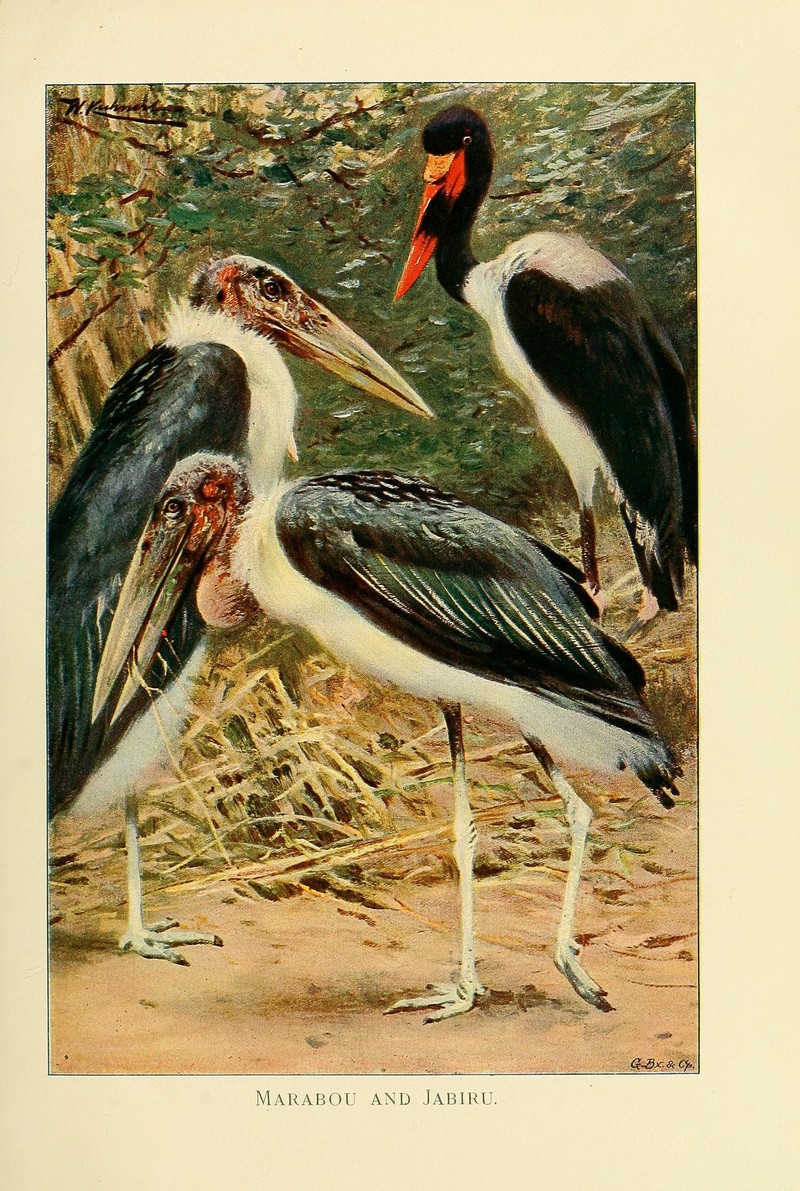|
| Query: Large white | Result: 408th of 2109 | |
marabou stork (Leptoptilos crumenifer), saddle-billed stork (Ephippiorhynchus senegalensis)
| Subject: | marabou stork (Leptoptilos crumenifer), saddle-billed stork (Ephippiorhynchus senegalensis)
| | Poster: | Wiki Photos (---@---.---)
| |

| Resolution: 2089x3110
File Size: 1960475 Bytes
Upload Date: 2017:07:06 16:10:30
|
Marabou and Jabiru.
Date 1916
Source http://www.flickr.com/photos/biodivlibrary/9133081773
Author Richard Lydekker
Full title Wild life of the world : a descriptive survey of the geographical distribution of animals /
BHL Page URL http://www.biodiversitylibrary.org/page/33270346
Source: https://commons.wikimedia.org/wiki/File:Wild_life_of_the_world_(Plate_28)_(9133081773).jpg
The marabou stork (Leptoptilos crumenifer) is a large wading bird in the stork family Ciconiidae. It breeds in Africa south of the Sahara, in both wet and arid habitats, often near human habitation, especially landfill sites. It is sometimes called the "undertaker bird" due to its shape from behind: cloak-like wings and back, skinny white legs, and sometimes a large white mass of "hair".
The saddle-billed stork (Ephippiorhynchus senegalensis) is a large wading bird in the stork family, Ciconiidae. It is a widespread species which is a resident breeder in sub-Saharan Africa from Sudan, Ethiopia and Kenya south to South Africa, and in The Gambia, Senegal, Côte d'Ivoire and Chad in west Africa. |
^o^
Animal Pictures Archive for smart phones
^o^
|
|